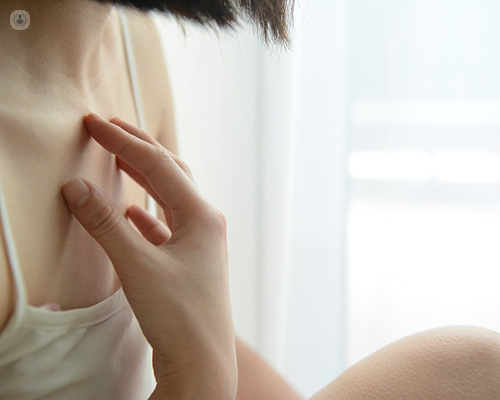Warts and all: the different types of wart, and how they are treated
Autore:Warts are cutaneous lesions (skin growths) of varying shapes that affect different areas of the body. They do not usually produce pain although in certain cases they can be annoying, feel itchy, and be cause for embarrassment. Warts are produced by the human papillomavirus and come in various forms.
Types of wart
There are different types of wart which can be found in different places on the body:
- Common warts are located primarily on the hands.
- Plantar warts are found on the soles of the feet, which can be very painful and even stop the patient walking.
- Flat warts appear on the face and forehead and are usually more common in children than in adults.
- Subungual and periungual warts appear below or around the nail and are sometimes quite difficult to eradicate.
- Filiform warts appear on the eyelid and neck.
- Genital warts are called condyloma. This type of wart appears in the genital organs and in the area of the pubis and the thighs, although they can also appear in the anal canal and the vagina.

Why do warts appear?
Warts are produced by the human papillomavirus (HPV), of which there are numerous varieties. Genital warts occur through sexual contact and are sometimes asymptomatic (meaning they do not display any symptoms). Genital warts are not produced by contact with common warts on the hands or other parts of the body, but by a strain of the human papillomavirus. Common warts are easy to recognise because of their appearance, although in some cases some of their tissue may need to be extracted in a procedure called a biopsy in order for them not to be confused with other skin conditions.
How to remove warts
There are numerous over-the-counter treatments in pharmacies that can be used topically to remove common warts. However, there are some types of wart that are especially resistant because of their location - for example, those that are under the nails. In cases like this, patients are usually referred to speciaists. A doctor can use stronger products such as salicylic acid to eradicate the most resistant warts.
Other methods of wart removal are cryotherapy (freezing), electrocautery and laser removal. These are widely used methods which yield positive results. In some cases, immunotherapy is used, injecting a substance that generates an allergic reaction and thus activates the immune system to fight the virus.
These methods apply to common warts. For genital warts, specialist treatment is usually required, because, in many cases, they do not produce any symptoms.
If you are concerned about warts or other skin conditions, book an appointment now with a specialist to get diagnosed and to get treatment.


